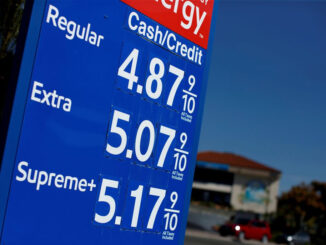
Energy News Beat Publishers Note: Irina Slav is an excellent writer for Oilprice.com. In her industry insight article, she raises some great points and questions. It is always best to hear all sides of the energy value chain. We publish both sides and insights.
Remember when EV and hydrogen truck maker Nikola listed last year? The stock soared in the first months of trading, only to slump heavily just a few months later after allegations were made—and later confirmed—that the CEO of the company had misled investors about its products.
According to some analysts, many companies like Nikola are out there touting EVs, solar, wind, and hydrogen.
And many of them will sink, taking their investors down with them.
“Every green energy proposal we have examined relies on the trifecta of wind, solar, and electric vehicles combined with various battery technologies,” said Leigh Goehring and Adam Rozencwajg from research firm G&R Associates in a quarterly market commentary.
“In recent months, a renewed ‘hydrogen mania’ has broken out as well, which adds a fourth leg to the green energy stool,” Goehring and Rozencwajg added. “These plans, including the current hydrogen craze, are bound to at best severely disappoint and, at worst, outright fail in what they attempt to accomplish.”
There are plenty of signs that support the wary take of the two commodity investment veterans. Green hydrogen, for instance, has been hogging headlines as a fuel and energy carrier for the future, even though analysts praising its potential have been noting that it will be years before it becomes economically viable. Some even doubt it ever will.
Solar and wind are cheap when it comes to components as the production costs of photovoltaic panels and wind turbines fall, but they are far from cheap when you factor in everything necessary to produce and supply electricity to end consumers reliably. Energy storage, to ensure the energy produced by a solar farm will not be wasted when the sun goes down, is far from cheap. It is also only enough to store power for a couple of hours.
The EV industry, for its part, is seeing its very own bubble. Automotive startups are going public at what would have been an unthinkable rate just a few years ago, all thanks to special-purpose acquisition vehicles. While not new, these were not particularly popular in the past. Now, they’re all the rage, and, as Goehring and Rozencwajg point out, this is another cause for worry.
Special-purpose acquisition companies are basically pools of investors that have no business activity of their own. They raise money by listing on a stock exchange for the sole purpose of acquiring another company, saving this company the trouble of going through the tedium of an initial public offer. Just last year, special-purpose acquisition companies raised some $40 billion, “with a mandate to acquire as-of-yet unidentified clean energy assets,” the commodity vets wrote in their report.
This is troubling because the initial public offering tedium does have its advantages: companies filing for IPOs are obliged to disclose a lot of information about their operations and assets. Companies going public via mergers with SPACs are not. Opacity has never been an investor’s friend, and it is not one now.
For all the red flags, the clean energy mania is unlikely to recede until the first dominos start to fall. The chief reason here is government support. In Europe and, since Biden became president, in the United States, billions are being planned to be poured out into clean energy and electric vehicles. With so much support from the highest places, it is no wonder that investors are pretty confident in their bets on the renewable trifecta and hydrogen. Whether this confidence is justified objectively is another question. After all, no one has ever argued that governments do not make mistakes—mistakes that can cost billions sometimes.



